The March walk was our farewell to waders, as next month they will be on their extraordinarily long and hazardous annual northerly migration…10,000 kilometres one-way!
Our ocean and saline mudflats provide a mass of seafood for adult birds, but the chicks with their tiny-bills need the abundant summer insects of the Arctic.
On arriving at Blue Rocks we hardly needed the telescopes to see a flock of tiny waders on the sand.
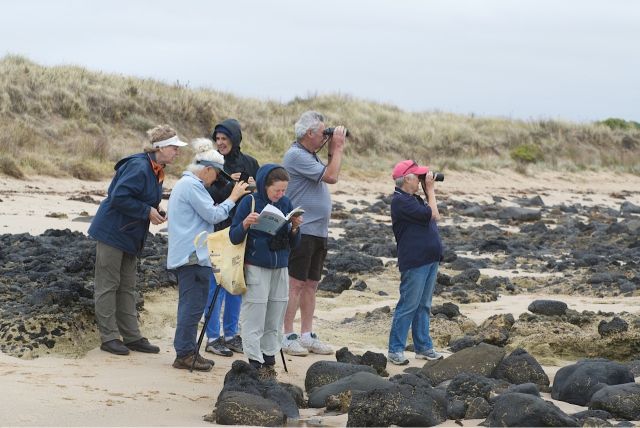
On the beach at Blue rocks…now which wader is it?
Far over on the edge of the rocks we were pleased to see a group of the larger, and less common, Pacific Golden Plovers, however they flew away before we could photograph them.
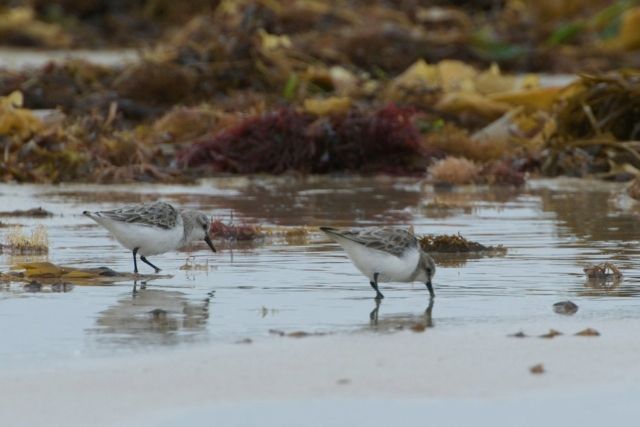
Red-necked Stints at Blue Rocks
When we had seen enough we tried Hospital Swamp which, though rapidly drying out, contained sufficient wetness to keep flocks of waders busily feeding.
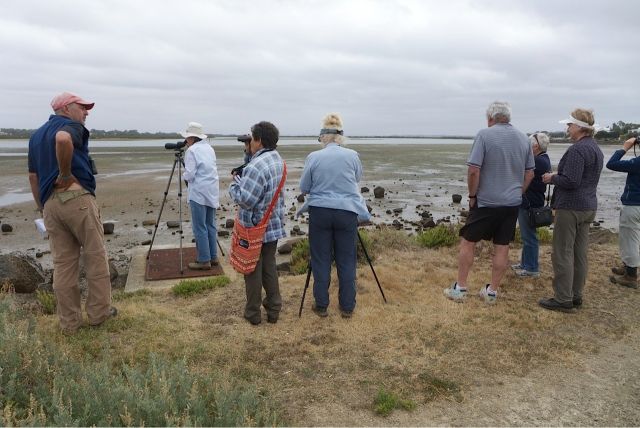
Hospital Swamp, just muddy enough
Two groups of small plovers ventured out from the vegetation and, on the far side, there was one timid Spotted Crake, plus a pair of hovering Whistling Kites. Flocks of ducks and swans also flew over looking for wetter locations.
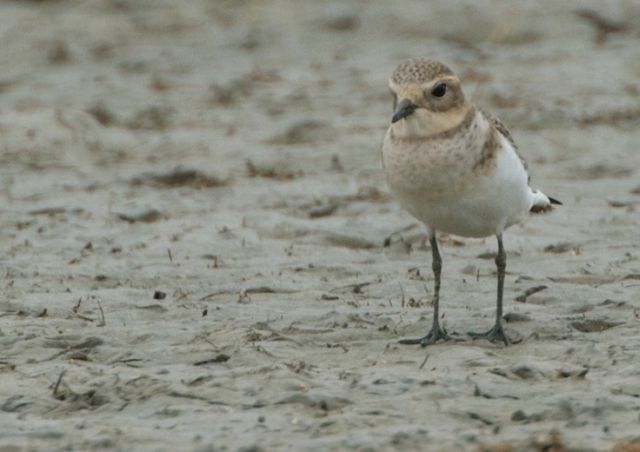
Double-banded Plover at Hospital Swamp
At Barwon Estuary, one Caspian Tern displayed his gorgeous red beak, and there were hundreds of swans, just beautiful in flight.
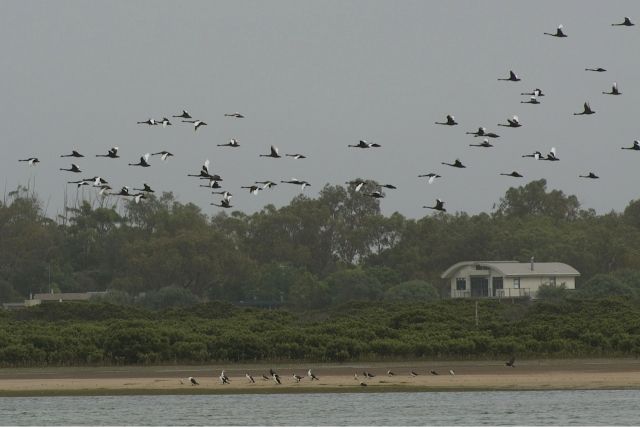
Swans over the Barwon Estuary
Ocean Grove Reserve was very dry but a Yellow Robin gave us the once over, and we were entertained by the delightful call of a Rufous Whistler.
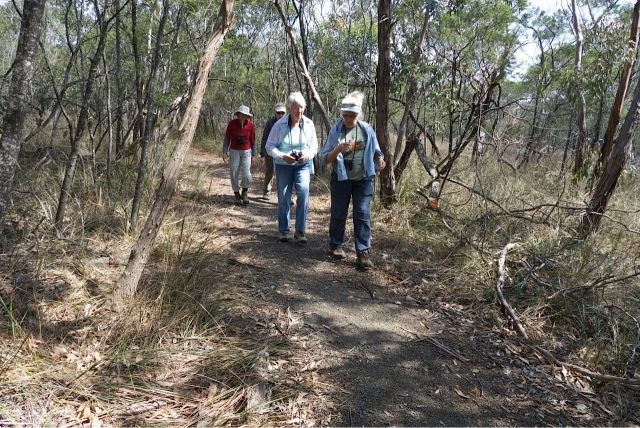
Very dry at Ocean Grove Reserve
When birds were in short supply we enjoyed the dragonflies.

Blue Skimmer Dragonfly
An Echidna entertained us by hiding his head in hole, just like a small child who thinks they cannot be seen.

Echidna spines
The tally of 54 species for the day, which included many bush birds, was very satisfactory:
- Black Swan
- Grey Teal
- Chestnut Teal
- Crested Pigeon
- Little Pied Cormorant
- Great Cormorant
- Pied Cormorant
- Australian Pelican
- Cattle Egret
- White-faced Heron
- Australian White Ibis
- Straw-necked Ibis
- Black-shouldered Kite
- Whistling Kite
- Purple Swamphen
- Australian Spotted Crake
- Black-winged Stilt
- Pacific Golden Plover
- Red-capped Plover
- Double-banded Plover
- Black-fronted Dotterel
- Hooded Plover
- Red-kneed Dotterel
- Masked Lapwing
- Common Greenshank
- Red-necked Stint
- Sharp-tailed Sandpiper
- Curlew Sandpiper
- Caspian Tern
- Crested Tern
- Pacific Gull
- Silver Gull
- Blue-winged Parrot
- Superb Fairy-wren
- White-browed Scrubwren
- Yellow-rumped Thornbill
- Brown Thornbill
- Singing Honeyeater
- White-plumed Honeyeater
- Noisy Miner
- Red Wattlebird
- White-fronted Chat
- New Holland Honeyeater
- Rufous Whistler
- Grey Butcherbird
- Australian Magpie
- Grey Fantail
- Willie Wagtail
- Little Raven
- Magpie-lark
- Eastern Yellow Robin
- Silvereye
- Welcome Swallow
- House Sparrow
Ellinor Campbell
Bird photos by Margaret Lacey
Dragonfly photo by Lynn Bunning